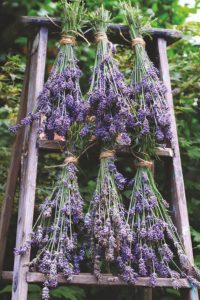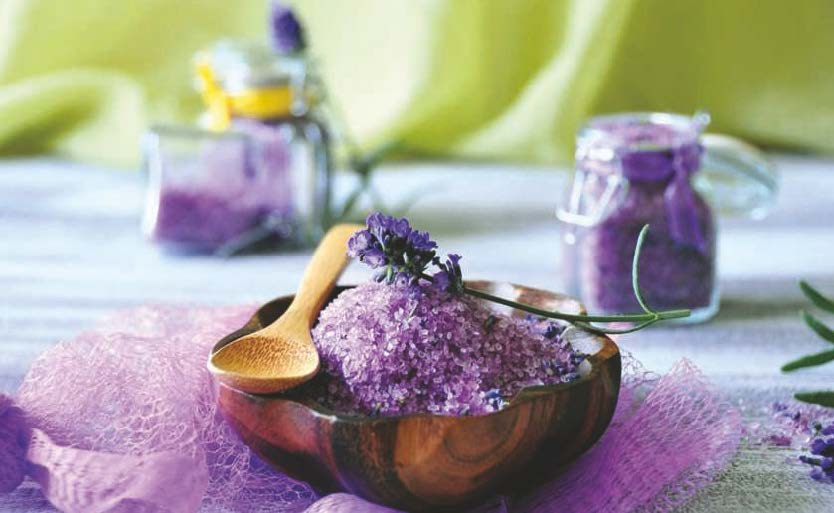Indulge Your Senses with Lavender
It’s an easy plant to grow, and adds a wonderful scent and colour to any garden. It’s also a plant bees love, so you might not want to harvest all of it - leave a little for the bees.
When it comes to plants that earn their keep, lavender tops all the charts. They look good all year round and the aroma they impart is delightful. Then wonderful spires of purple flowers open in summer which can be cut and dried for home medical remedies, for scenting a room, in potpourri, for cooking, and for making lavender bags or lavender sachets.
 Some lavenders have great presence as architectural specimens, most are ideal for low hedging, and all of them are wonderful for bees. If pruned correctly, they should last for years, making them fantastically rewarding for very little cost and effort.
Some lavenders have great presence as architectural specimens, most are ideal for low hedging, and all of them are wonderful for bees. If pruned correctly, they should last for years, making them fantastically rewarding for very little cost and effort.
Lavender is best planted between April and May as the soil begins to warm up. It thrives in any poor or moderately fertile, free-draining soils in full sun, and is ideal for chalky or alkaline soils.
Once established, lavender is fairly drought tolerant and is suitable for coastal planting and gravel gardens. Little feeding is required, although a sprinkling of potash around the base of plants will encourage more flowers.
Pruning
Pruning lavender varies according to the type you’re growing. English lavender (Lavandula angustifolia) is the most commonly grown and the hardiest of lavender plants. It is pruned by cutting it back by two thirds in the second half of August. You can cut into the bare wood if need. New shoots will quickly appear at the base. This pruning regime will keep an English lavender plant compact for many years. You can give English lavender another tidy in April to delay flowering time.
Lavender Uses
There are many uses for dried lavender in and around the home. It can be used in home medical remedies, for scenting a room, in potpourri, for cooking, and for making lavender bags or lavender sachets.
Also, dried lavender is attractive and decorative. Some people hang them in bunches around the home or use them as part of a dried flower arrangement. You can buy dried lavender, but if you want to pick your own for drying you should pick it when it has just opened fully and smells fragrant. The newly-opened blossoms and fragrance means it has a strong concentration of the essential oils and freshness you want to preserve. If you leave the flowers to bloom for longer, the dried bunches will be less potent.
It’s best to harvest lavender in the early evening, after a dry day. Harvesting at this time will mean that you do not need to dry any rain or morning/evening dew before being able to dry the flowers.
When it’s time to cut your lavender get a pair of sturdy scissors or secateurs. Then follow these steps to harvest the plants:
Cut carefully, avoiding crushing the flowers. You should cut just above the leaves, with a good long stem, to make it easier to hang the stalks for drying. Don’t cut into the woody part of the plant; leave an inch or two at least of the green growth to encourage future flowering. Don’t worry about damaging the plant – pruning like this will encourage the bush to grow even more enthusiastically the following year. Even if you want to leave some stalks of flower for the bees so that the rest of your garden benefits, it’s a good idea to cut the stalk once the flowers as finished to encourage new and healthy growth next year.
Best for bees
A study at the University of Sussex has discovered that two lavenders, late blooming ‘Edelweiss’ and purple variety ‘Gros Blue’ were the most frequently visited by all bees.
Which Varieties to Grow
L. angustifolia ‘Hidcote’: Very popular with compact, bushy grey-green foliage. Dense, dark-violet flowers from late June.
L. angustifolia ‘Nana Alba’: Light green foliage on compact plant with profuse white flowers.
L. angustifolia ‘Hidcote Pink’: Grey-green foliage and very pale pink/lavender flowers from late June.
L. angustifolia ‘Munstead’: Compact with narrow, grey-green foliage and spikes of small, highly-fragrant, blue-purple flowers in mid to late summer.
L. angustifolia ‘Beechwood Blue’: Low-growing with an abundance of violet-blue flower-spikes in early summer.
Health and Beauty

Lavender is much more than just pretty and calming. The use of lavender dates back thousands of years. In Roman times the flowers were added to baths. It is one of the most powerful remedies in the plant world, offering both physical and emotional relief for problems as varied as burns, migraines, insomnia, insect bites, skin problems, infections, stress and nervous tension. It owes this amazing spectrum of healing powers to its complex chemical make-up.
Bunches of lavender are also known to repel insects. In pillows, lavender seeds and flowers aid sleep and relaxation.
Colin and Barbara Dudley of Whitstable Lavender have been developing lavender products for over 12 years and now have a range of over 400 items including candles, soaps, bath fizzers, oils and lavender waters, many of which are hand-crafted locally.
How to use Lavender Oil
Lavender bath
Excellent for aching muscles, relaxation, and stress relief. Add 6-8 drops of essential oil after running the water.
Lavender vaporisation
Fill the top dish of an ‘oil burner’ or ‘vaporiser’ with water and add 6-8 drops of Lavender oil. Vaporisation is good to use when you have a cold or feel unwell.
Lavender massage
Particularly effective when you have tight and sore muscles or have sustained an injury. NEVER massage UNDILUTED oils, always use a good quality vegetable or carrier oil. Add 5 drops of Lavender oil per 10ml of vegetable oil.
Lavender tissues/handkerchief
Good for instant relief from flu, sinusitis and anxiety. Use 1-3 drops Lavender oil and inhale immediately as required.
Lavender for burns
After running cold water on the burn for 10 minutes, put a few drops of neat lavender oil onto the area. ONLY use lavender. Remember serious burns must be seen to by a doctor.
Posted in: Gardens
